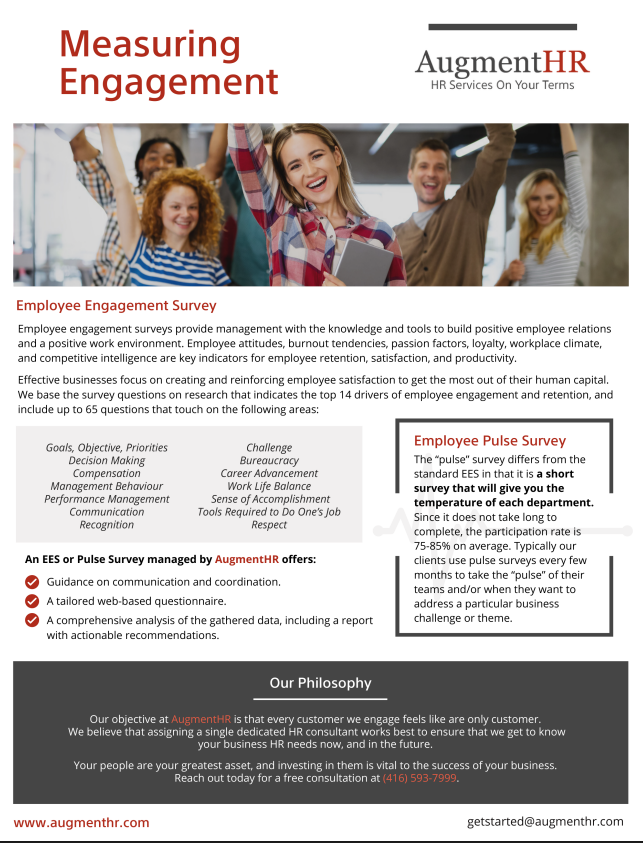How to Tell if You Have Poor Employee Relations
How Can You Tell If You Have Strong - Vs Poor - Employee Relations? 8 Ways To Check
By Kimberly Blake
Maintaining strong employee relations is a crucial component of a robust organizational culture. In the past, we’ve written about strategies to improve employee relations. In this blog, we’re going to take a more in-depth exploration to find out if you have a problem with employee relations.
In this blog, we’ll discuss the following:
- What is the meaning of employee relations?
- What are some examples of good employee relations?
- How to tell if you have strong employee relations
- How to tell if you have poor employee relations
- Employee pulse surveys
What is the meaning of employee relations?
Employee relations is a fundamental aspect of human resources focused on managing and maintaining a positive, productive, and respectful relationship between an employer and its employees. It goes beyond the terms of a legal contract, encompassing the day-to-day practices, policies, and strategies that foster a healthy work environment.
The primary goal of employee relations is to prevent and resolve workplace issues, build a culture of trust and open communication, and ensure fair and consistent treatment for all staff.
This involves a variety of activities, such as mediating disputes between colleagues or between employees and managers, developing and enforcing equitable policies and guiding and supporting employees to improve their performance.
Employee relations also includes implementing initiatives that make employees feel valued, such as recognition programs, professional development opportunities, and avenues for feedback.
What are some examples of good employee relations?
In my 20 years experience as an HR consultant for a diverse group of companies, solid employee relations aren't about having zero issues or complaints. Healthy conflict, when managed constructively, can improve communication, build stronger relationships, and enhance problem-solving. It can foster creativity, lead to better decisions, and promote personal and professional growth.
Managing employee relations effectively requires trust, consistency, and accountability when issues arise. Want to know if you're in a good place? Look for:
1. Low drama, high trust
2. Consistent policy enforcement
3. Feedback that actually changes things
4. Leaders who walk the talk
Strong employee relations are rarely accidental. They reflect intentional, consistent effort across every layer of the organization. If these four areas are humming, you’re likely in a good place. If not, they’re also a great place to start.
How to tell if you have strong employee relations
Strong employee relations can be identified through several key indicators that point to a healthy, productive, and engaged workplace. Here are 5 ways you can tell if your organization is succeeding in this area:
1. High employee engagement
When employee relations are strong, people are generally happier and more invested in their work. High employee engagement scores from regular surveys often show that staff are enthusiastic, committed, and motivated. Low absenteeism is another indicator, as employees are more likely to come to work when they feel respected and connected to their job and team. Positive feedback is also a telling sign, when employees speak with optimism and pride about their work, their team, and the company, it reflects a healthy workplace culture.
2. Low turnover and high employee retention
A low turnover rate suggests that employees are not actively looking for new jobs and are willing to stay with the company for longer periods. High retention of top performers is equally important—when the most valuable employees feel supported and see a future within the company, they are far less likely to leave.
3. Open and effective channels of communication
Trust and psychological safety ensure employees feel comfortable speaking up, sharing ideas, and voicing concerns without fear of negative consequences. Clear policies and expectations eliminate confusion around job responsibilities, company rules, and performance metrics. Two-way feedback systems, such as regular check-ins, surveys, and open-door policies, allow communication to flow freely between management and staff.
4. A constructive conflict resolution process
While conflict is inevitable in any workplace, the way it is handled speaks volumes about employee relations. In a strong environment, disputes are resolved fairly, promptly, and without favouritism. The focus is not on placing blame, but on identifying the root cause of issues and finding solutions that work for everyone involved.
5. A collaborative and respectful work environment
Collaboration across teams and individuals happens naturally, with everyone working toward shared goals. Respect for diversity is also a core element, as the company values and appreciates different backgrounds, perspectives, and working styles. Additionally, maintaining a healthy work-life balance shows that employees are valued as people, not just workers.
How to tell if you have poor employee relations
Poor employee relations can slowly poison a workplace, but the signs are often clear if you know what to look for. Rather than a single issue, poor relations manifest and can affect everything from daily work to long-term business health. Here are the 3 main signs of employee relations issues:
1. A negative and unproductive environment
When employee relations are poor, the workplace atmosphere often turns negative. Low morale and disengagement become common, with employees appearing apathetic, unenthusiastic, and disconnected from their work.
High absenteeism and turnover are also clear warning signs. Employees may frequently call in sick, arrive late, or leave the company altogether when they feel undervalued, disrespected, or trapped in a toxic environment. Over time, this negativity impacts performance. Declining productivity shows up in missed deadlines, lower-quality work, and a lack of initiative as motivation fades.
2. Communication and trust issues
Trust is the foundation of a healthy workplace. When it’s missing, problems arise. Employees may hesitate to speak up, share honest feedback, or voice concerns due to fear of retaliation, allowing small issues to grow unchecked.
An “us vs. them” mentality can also develop. This divide between management and employees, or even between departments, undermines teamwork and encourages finger-pointing instead of collaboration.
Without transparent communication, gossip and rumours fill the gap. Speculation about decisions, roles, and colleagues damages trust further and fuels a toxic atmosphere.
3. Unresolved conflict and unfair treatment
Poor employee relations often stem from mishandled or ignored workplace conflicts. When disputes between employees or with management remain unresolved, resentment builds, and employees feel the company doesn’t care about them.
Perceived unfairness can be equally damaging. If promotions, raises, or disciplinary actions appear based on favouritism rather than merit, morale suffers. A lack of clear and consistently applied policies often causes this perception.
Micro-management is another red flag. When employees feel monitored rather than trusted, engagement drops. These problems often feed into each other, poor communication can lead to rumours, which fuel conflict and further erode trust. Recognizing these patterns is the first step toward a healthier, more productive workplace.
Conduct an Employee Pulse survey to assess your employee relations
There are many tools you can use to assess whether you have good employee relations, such as engagement surveys, stay/exit interviews, teambuilding exercises, conflict styles training, and manager bootcamps.
As
an experienced HR services company, AugmentHR uses an EES or a Pulse Survey to assess the pulse of your employee relations. The Pulse Survey differs from the standard EES in that it is a short survey that will give you the temperature of each department. Since it does not take long to complete, the participation rate is 75-85% on average.
It's a tailored web-based questionnaire providing a comprehensive analysis of the gathered data, including a report with actionable recommendations.
Contact us today to learn more about assessing the state of your employee relations.
Click here to download more about Measuring Employee Engagement
A final word on strong employee relations
Strong employee relations are essential to building a thriving workplace and sustaining long-term business success. By recognizing the signs of both healthy and unhealthy relationships between employees and leadership, organizations can take targeted action to build trust, engagement, and collaboration. Tools like pulse surveys provide valuable insight into the current state of employee relations, enabling leaders to address challenges early and build on strengths. The result is a workplace where people feel valued, supported, and motivated to contribute their best every day.
Only need HR Services 10% of the time? Then why pay 100% of the time? Get help with Employee Relations Surveys or any portion of our
14 other HR Services.
Kimberly Blake is a senior
HR Consultant
with AugmentHR, an HR consulting firm centred in Toronto serving North American clients. Kimberly has helped a wide range of companies with their HR needs including Philips, Hershey’s and GSK. She’s helped companies manage periods of rapid growth while maintaining company culture with projects ranging from organizational design down to, yes, effective job postings.














